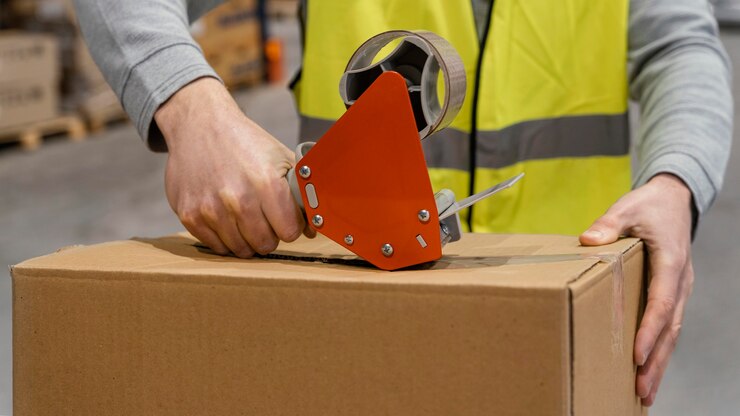When it comes to the safe and efficient transportation of goods, logistic straps stand out as an indispensable tool. These straps, also referred to as tie-down straps or cargo straps, are specifically designed to secure loads during transit. Whether you’re driving a small pickup truck or managing a large freight operation, logistic straps ensure your cargo stays in place, reducing the risk of accidents, damages, or losses. This article will explore the various features, types, and applications of logistic straps, as well as important tips for using them effectively.
What Are Logistic Straps?
Logistic straps are heavy-duty straps made from durable materials like polyester webbing, designed to fasten and secure cargo for transportation. They include additional hardware such as hooks, clasps, or ratchets to tighten and lock the straps securely in place. Available in various sizes and strengths, these straps are versatile tools used by businesses, logistics professionals, and even DIY transporters for securing cargo of different weights and shapes.
Key Features of Logistic Straps
- Strength and Durability
Logistic straps are made from high-quality materials that are resistant to wear and tear. Many straps have high tensile strength, enabling them to secure heavy and bulky cargo effortlessly.
- Adjustable Lengths
The adjustable nature of logistic straps allows users to fasten cargo of varying sizes effectively. Ratchet buckles and cam straps make it easy to control the level of tension.
- Corrosion-Resistant Hardware
The metal components such as hooks or ratchets are often coated to prevent rust and corrosion, ensuring prolonged usability even in harsh conditions.
- Safety Features
Some logistic straps are equipped with safety labels and markers to ensure they are used within their prescribed limits. UV-resistant designs also keep the straps resilient in sunny or extreme weather.
Types of Logistic Straps
- Ratchet Straps
These are among the most commonly used types of logistic straps. They feature a ratchet mechanism that allows for precise tensioning and holds the load tight.
- Cam Buckle Straps
Cam buckle straps are ideal for lighter loads and less demanding applications. They use a cam buckle to secure cargo without over-tensioning.
- E-Track Straps
Designed for use with E-track systems, these straps are commonly employed in trucking and freight applications. They connect to the E-track system inside trailers for reliable cargo security.
- Bungee Straps
While not as heavy-duty as other options, bungee straps are elastic and useful for smaller loads or temporary fixes.
Why Are Logistic Straps Important?
Logistic straps are essential for maintaining safety during cargo transportation. Without them, cargo could shift or fall during transit, leading to accidents, financial losses, and potential harm. By using properly rated straps, drivers and logistics teams can ensure compliance with safety regulations, minimize liability, and protect their goods and equipment.
Additionally, logistic straps offer the convenience of reusability, making them an eco-friendly and cost-effective tool. They are also more secure and reliable compared to alternatives like ropes.
Best Practices for Using Logistic Straps
- Choose the Right Strap for Your Load
Ensure that the strap you use has the appropriate weight limit and length for the cargo. Overloading straps can compromise their effectiveness and lead to failures.
- Inspect Straps Regularly
Before use, inspect for signs of damage such as fraying, cuts, or worn-out hardware. Replace any defective straps to ensure safety.
- Follow Proper Tensioning Techniques
Whether using a ratchet strap or a cam buckle strap, avoid over-tightening as it could damage the cargo or the strap itself.
- Store Straps Correctly
When not in use, store logistic straps in a cool, dry place to prevent exposure to excessive moisture, sunlight, or sharp objects that could degrade their quality.
Applications of Logistic Straps
- Freight and Shipping
Logistic straps are extensively used within trucking, shipping, and warehousing industries to secure pallets, equipment, and other loads.
- Recreational Purposes
Outdoor enthusiasts rely on logistic straps to secure kayaks, bikes, or camping gear to their vehicles during travel.
- Home and DIY Projects
From moving furniture to transporting yard equipment, these straps are a versatile option for everyday use.
- Construction and Heavy Equipment
Builders use heavy-duty logistic straps to secure construction materials, tools, and machinery during project deliveries.
Benefits of Logistic Straps Over Alternative Methods
- Enhanced Safety
Compared to ropes, logistic straps offer better grip and tension, reducing the chances of cargo shifts.
- Ease of Use
Ratchet straps and cam buckles are simple to operate, requiring minimal effort to secure heavy loads.
- Efficiency
Their quick tightening and release functionality save time, making them ideal for industries with tight schedules.
How to Select the Right Logistic Straps for Your Needs
When choosing logistic straps, consider factors such as the weight and size of your cargo, the type of transportation (open-air or enclosed), and the environmental conditions the straps will encounter. Always check the working load limit (WLL) marked on the strap as a guide to ensure it suits your requirements.
Final Thoughts
Logistic straps are a must-have tool for anyone involved in the transportation or handling of goods. Their ability to secure cargo effectively, combined with their durability and ease of use, makes them an investment worth considering. By following the proper guidelines and choosing high-quality straps, individuals and businesses can ascertain the safety and integrity of their loads, ensuring smooth and accident-free journeys every time. Always prioritize safety by inspecting your straps and using them within their prescribed limits, and you’ll find logistic straps to be your perfect ally for all cargo-related needs.

















